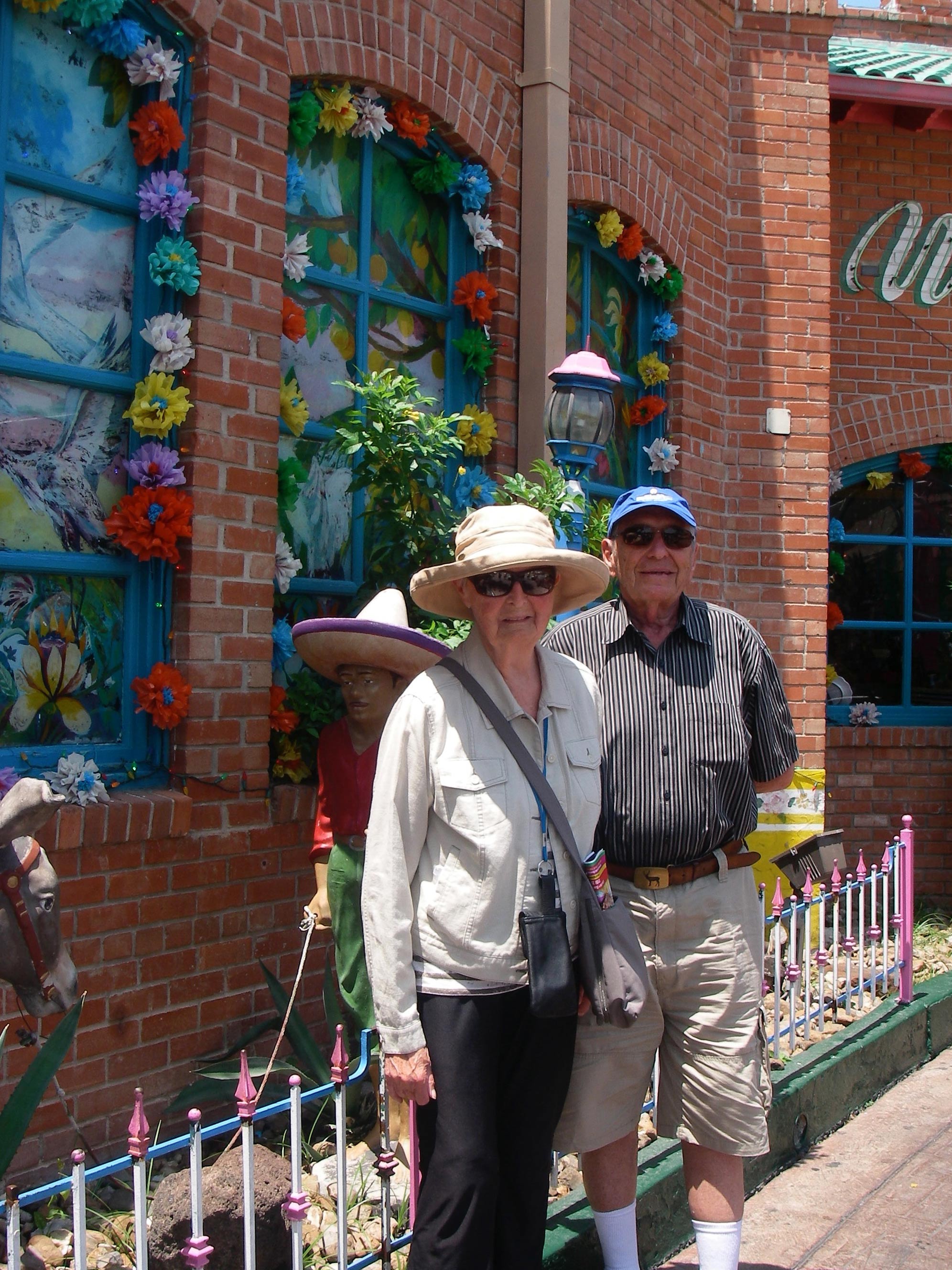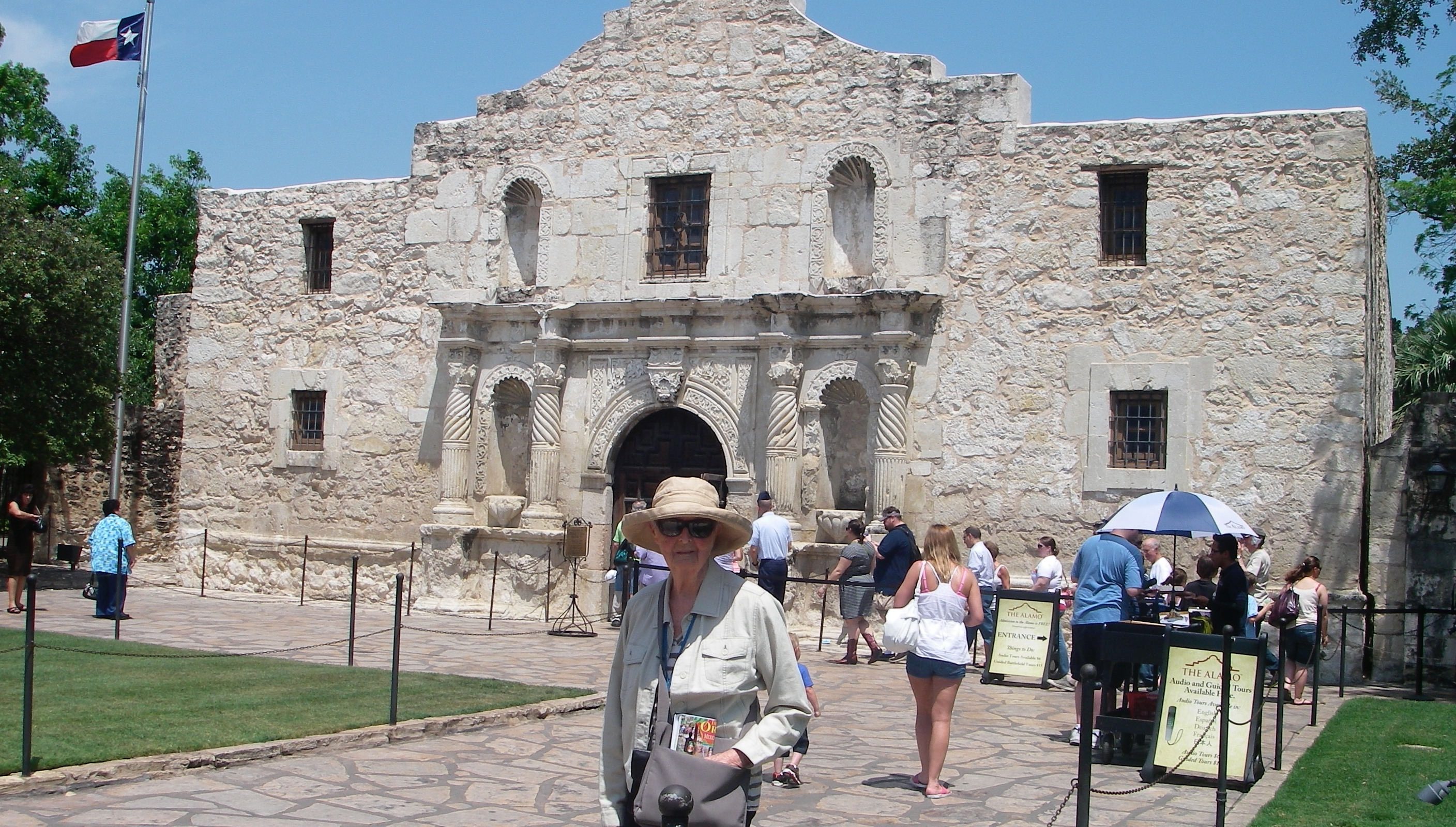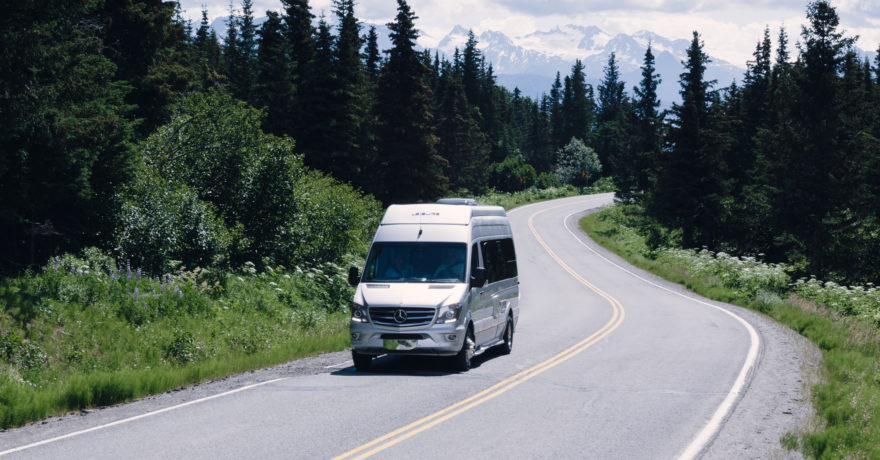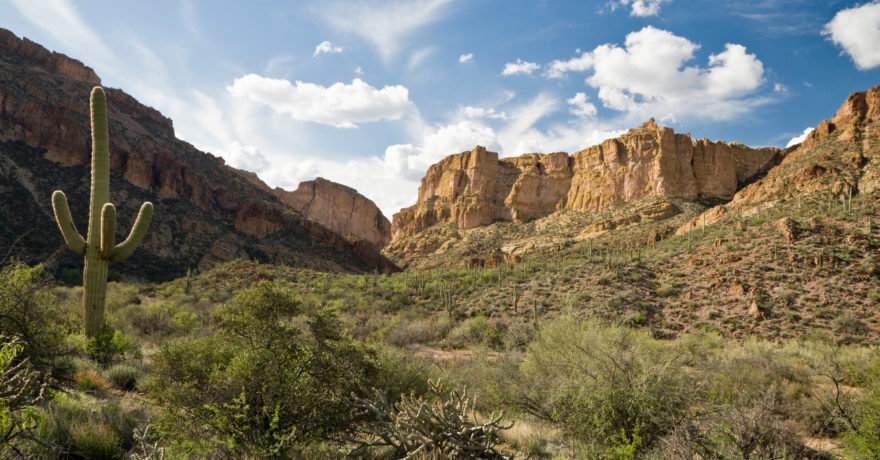“Life’s journey is not to arrive at the grave safely in a well-preserved body, but rather to skid in sideways, totally worn out, shouting, “Wow, What a ride!”
With thanks to our son Bill, this became our mantra as we contemplated our first 10,000-mile journey in our new Unity IB from Leisure Travel Vans. We were laughing with and at each other, cozy in our double bed, falling asleep, parked in our driveway. The van was in our driveway rather than in its parking spot in the back lot of a local fruit and vegetable stand because it had to be plugged into electricity so the freezer would be very cold for the trip. Our daughter Sue had made enough thick, nourishing soup for our 30-day adventure and had packaged it in baggies-for-two to be frozen. Supper would be assured.
What were we doing, we asked each other, and even more important, why? That was easier to answer. We knew we wanted to spend the summer in Maine at our family’s summer camp for boys because that’s where we would see our family—our children, grandchildren, and two new great-grands. It had become too strenuous in our late eighties for us to fly or even to drive a car, so we had decided to buy a home on wheels, taking all our comfort with us as we drove. So, as long as we were going to Maine, why not see the national parks “on the way”. On the way turned into a trip across Florida, through Louisiana, across Texas, to New Mexico, Arizona, Utah, Wyoming, and South Dakota before heading back East to Maine and finally home to Florida.
Since we live in a deed-restricted community, i.e. no trucks, vans, busses, RVs parked overnight in driveways, we knew we were in trouble with our neighbors so we decided to get up with the sun and scoot out of there before anyone else was up.
Lesson #1: If you are planning to own an RV, don’t buy a home in a deed-restricted community. They are not RV-friendly.
In our innocence we had planned 450-mile days, figuring on traveling about 7 ½ hours a day. If we started at about 7:00 a.m., we’d be at our RV park destination by 2:30. Wrong. You have to add lunch stops, diesel stops, stretch stops, short walk stops—all of which adds up to about 9 hours a day. In spite of my armchair yoga and long stretches on the bed with my legs upon a pillow, I arrived with an aching back and swollen ankles.
Lesson #2. Don’t plan 450-mile days.
It’s too long of a day for old bones, and if you plan to stop to see any sights, it could get even longer. At 4:00 p.m., when you need a shower and a nap, it could be suppertime before you have had a chance to even unwind or relax. Far better to get to your RV park by 2:00 p.m., enjoy some sunshine on your lounges, read the newspaper or a book, then indulge in a shower and a nap before supper. We had a lot to learn.
Not being the driver, I had plenty of time to read maps so I could argue with Sally, our friendly GPS lady. It did me no good, since Allie was in love with Sally and she could do no wrong. I gave that up quickly and took to reading road signs.
Lesson #3. If you are planning to move to a new area, or even to stay a night or two in an RV park, read the road signs first. You’ll learn a lot about the politics, the economy and the mores of the community.

RV Parks
Not all RV parks are created equal. And not all the stars in the Woodall’s book tell the whole story. Price doesn’t give you an indication of the quality of a park, either. Since they range from $20 a night to $60 a night, you’d expect the more expensive to be better. But, it’s not always so. Quality is determined by location, climate, and availability of land. Other factors include whether the park has full-time residents and the quality of the competition in the area. As it turns out, once you’re hooked up and locked into your home on wheels for the night, it doesn’t really matter if kids and bikes are racing around. But if you’re looking for a nap and some outdoor relaxation under your awning, then it’s nice to have some grass, trees, shade and quiet.
Lesson #4. Ask experienced RVers for recommendations.
Or, if you are the adventuresome type, don’t make reservations ahead. Instead, when you are tired of driving, check your app or your book for RV parks in the area, take a look, and then decide where to stay. It’s just a question of whether you prefer knowing you have a reserved home for the night or whether you are willing to take your chances. We opted for reservations ahead, some of which were gorgeous, and others not so much.
About Eating
We found that a schedule of breakfast on board, lunch out, and supper on board worked very well for us. We started our day with an early breakfast of cold cereal, berries, coffee and tea and ended it with an easy supper of defrosted, microwaved soup, salad, fresh bread and cheese, and some good cookies. Both meals were easy to prepare and had minimum cleanup. If we were in a town or city renowned for its good food, i.e. New Orleans, we’d call a cab and go to town for dinner.
Tip: If you’re planning to eat in town, choose an RV park close by or a cab could cost you up to $100 — and that’s not counting dinner.
Being on the road at lunchtime, we became adept at picking out good lunch spots. With the help of the AAA book, we sometimes found family restaurants—an outstanding deli, a great Italian spot, an authentic Mexican Bodega, or a clean soup and salad bar. But our mainstays were the “fast food” havens available in almost every town we passed through. We quickly eliminated McDonalds, Wendy’s, DQ and a few others, settling finally on Subway, which true to its advertising was fresh and good. It served sandwiches with honest chicken breasts undisturbed by crusts and deep-frying, fresh rolls and unlimited crisp, fresh veggies. A bonus was that the whole sandwich was too big for lunch, so the second half, individually wrapped, made a nice supper with our soup.
But, sometimes we passed by towns with nary a glimpse of a restaurant on the road, just a sign pointing to the town. Once or twice, being hungry enough, we turned off the road to find ourselves driving miles and miles by nothing but fields, farms and an occasional head of cattle.
Lesson #5. Beware of road signs pointing to nowhere if they don’t list the mileage.
You could end up driving 20 miles or more each way, adding to a trip that was already long enough. For just such emergencies, it’s good to have bread, cheese, cold orange juice, cookies and fruit on board. Then it’s a quick stop for lunch at a rest area (if you can find one), or even a vacant parking lot.
Tip: If you find a Wal-Mart, you’re in luck. They welcome RVers, both for stops and for overnight stays at no charge. We never spent an overnight, but we often stopped in those huge parking lots where pullthroughs are available all over.
Highlights of our First Week
San Antonio was gorgeous. We had a beautiful RV Park with a charming host and hostess, and when we called a cab to go to the Alamo and lunch, Roman arrived. He was a third-generation San Antonian, and just loved showing us around. He took us to the Alamo, where we did an audio tour, reveling in the history and recalling our elementary school teachers. Then, collapsing from the heat and the dryness, we called Roman to take us to an air-conditioned restaurant for lunch. He chose Mi Tierra, an authentic Mexican hotspot, very crowded and busy, but surely worth the wait. We enjoyed fajitas and Negra beer for Allie, lots of iced tea for me. Back at the Sabel, we drowned ourselves in water and AC, spent a comfortable night, and went to bed, serenely confident we’d be up early and on our way to New Mexico.
Lowlight of our First Week
As any traveler knows, you can’t have highlights without lowlights, so this is the saga of the loo. I tried to come up with a polite name for it—the flush, the rest room, the facility, the toilette, the basement (as in “May I go to the basement?”) then, on the advice of a friend, decided to call it “the loo”. It’s a bit intimate and personal, so feel free to skip.
We discovered the loo was clogged when we first used it after a wonderful day in Santa Fe, and Allie immediately started contacting the company where we bought the van and the AAA of RVers who had assured us that would be there for us whenever and wherever needed. Our first contact said they could take care of us sometime the next week. I won’t describe Allie’s reaction, but you can guess. The AAA-type woman gave us a name in Moriarty, NM, and said she was sure they would be able to help us. By this time I was on the phone, and told Barbara my little old lady story: I am 87, my husband is 88, he is World War II veteran, we are on the road in our new RV for the first time ever, etc. until poor Barbara said, “It’s OK, Evelyn. Not to worry. I have parents your age and I will call the gentleman and he will take care of you.”
We took the 100-mile detour to Moriarty and there on fabled Route 66 we found a lovely Buffy at the desk and a pony-tailed Kevin, the mechanic, who said he’d try. Two hours and two hundred dollars later (we considered it a bargain), we had a working flush and we were on our way North again. Luckily, we had two nights booked in Taos, so we finally had time to do laundry, take a grown-up shower in the Park’s facility, even though we did lose a day of rest. A working loo was worth it all.
Lesson #6. Keep the cover of the loo down all the time when not in use. Things tend to fall into it, which turned out to be our problem.







Comments